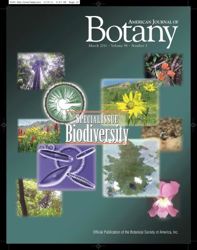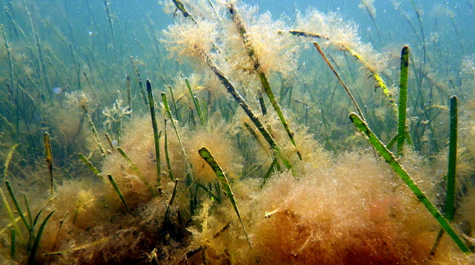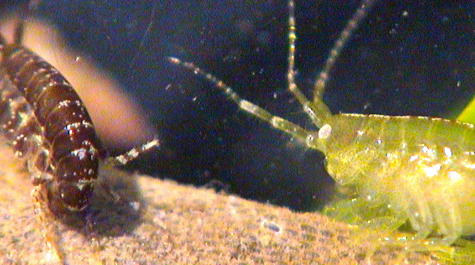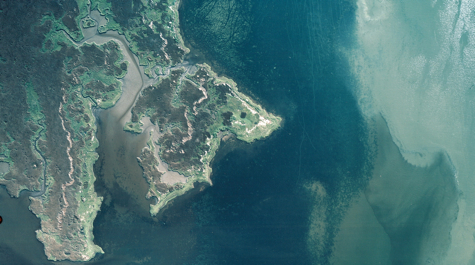Loss of plant diversity threatens Earth's life-support systems
An international team of researchers including professor Emmett Duffy of the Virginia Institute of Marine Science has published a comprehensive new analysis showing that loss of plant biodiversity disrupts the fundamental services that ecosystems provide to humanity.
Plant communities—threatened by development, invasive species, climate change, and other factors—provide humans with food, help purify water supplies, generate oxygen, and supply raw materials for building, clothing, paper, and other products.
The 9-member research team, led by professor Brad Cardinale of the University of Michigan, analyzed the results of 574 field and laboratory studies—conducted across 5 continents during the last 2 decades—that measured the changes in productivity resulting from loss of plants species. This type of “meta-analysis” allows researchers to move beyond their own individual or collaborative studies to get a much more reliable global picture. Their study appears in the March special biodiversity issue of the American Journal of Botany.
 "The idea that declining diversity compromises the
functioning of ecosystems was controversial for many years,” says Duffy, a
marine ecologist who has studied the effects of biodiversity loss in seagrass
beds. “This paper should be the final nail in the coffin of that controversy.
It's the most rigorous and comprehensive analysis yet, and it clearly shows
that extinction of plant species compromises the productivity that supports
Earth's ecosystems."
"The idea that declining diversity compromises the
functioning of ecosystems was controversial for many years,” says Duffy, a
marine ecologist who has studied the effects of biodiversity loss in seagrass
beds. “This paper should be the final nail in the coffin of that controversy.
It's the most rigorous and comprehensive analysis yet, and it clearly shows
that extinction of plant species compromises the productivity that supports
Earth's ecosystems."
The team’s analysis shows that plant communities with many different species are nearly 1.5 times more productive than those with only one species (such as a cornfield or carefully tended lawn), and ongoing research finds even stronger benefits of diversity when the various other important natural services of ecosystems are considered. Diverse communities are also more efficient at capturing nutrients, light, and other limiting resources.
The analysis also suggests, based on laboratory studies of algae, that diverse plant communities generate oxygen—and take-up carbon dioxide—more than twice as fast as plant monocultures.
The team’s findings are consistent for plant communities both on land and in fresh- and saltwater, suggesting that plant biodiversity is of general and fundamental importance to the functioning of the Earth’s entire biosphere.
 Duffy, Loretta and Lewis Glucksman Professor of Marine
Science at VIMS, says the team’s findings are important locally because estuaries
like Chesapeake Bay are naturally low in plant diversity, making them especially
vulnerable to ecological surprises resulting from loss of species.
Duffy, Loretta and Lewis Glucksman Professor of Marine
Science at VIMS, says the team’s findings are important locally because estuaries
like Chesapeake Bay are naturally low in plant diversity, making them especially
vulnerable to ecological surprises resulting from loss of species.
“Salt marshes and seagrass beds depend largely on one or a few species of plants that create the habitat structure,” says Duffy. “When such species are lost, low diversity means there is often no one else to take their place and the effects can ripple out through the community of animals, potentially up to fishery species.”
In addition to analyzing the general effects of biodiversity loss, the team also sought to determine the specific fraction of plant species needed to maintain the effective functioning of a particular ecosystem—important information for resource managers with limited human and financial resources to manage forests, marine reserves, and other protected areas on land and sea. The results of this effort were mixed, and the team’s ongoing research is tackling this question.
Data from the study did suggest, however, that biodiversity loss may follow a “tipping-point” model wherein some fraction of species can be lost with minimal change to ecological processes, followed by a sharp drop in ecosystem function as species loss continues.
Biodiversity loss in the real world
Recognizing that their findings mostly rest on analysis of short-term experiments (generally a few days, weeks, or months) in relatively small settings, the researchers also attempted to determine how diversity effects “scale-up” to longer time scales, bigger areas, or both. The authors note that these are the real-world scales “at which species extinctions actually matter and at which conservation and management efforts take place.”
The team’s findings suggest that scale does indeed matter, and that small laboratory and field experiments typically underestimate the effects of biodiversity loss. In the researchers’ own words, “Data are generally consistent with the idea that the strength of diversity effects are stronger in experiments that run longer, and in experiments performed at larger spatial scales.”
Duffy is now further testing this scaling issue with a 3-year grant from the U.S. National Science Foundation. He is using the grant to establish a global experimental network for studying how nutrient pollution and changes in biodiversity impact seagrass beds.
The future of biodiversity studies
The American Journal of Botany study also identifies the additional information needed to better understand biodiversity loss and its effects. Important frontiers include additional studies of how small-scale diversity experiments scale-up to real ecosystems; how biodiversity loss compares to and interacts with other environmental stressors such as climate change, invasive species, low-oxygen dead zones, ocean acidification, and water pollution; and how species-level diversity compares in importance with diversity at other levels such as genetic and functional (e.g., herbivore, grazer, or carnivore)
Cardinale says information from these types of studies will put scientists "in a position to calculate the number of species needed to support the variety of processes required to sustain life in real ecosystems.” He adds, “And we don't mean ‘need’ in an ethical or an aesthetic way. We mean an actual concrete number of species required to sustain basic life-support processes."
Study co-author Jarrett Byrnes, of the National Center for Ecological Analyses and Synthesis, says "Species extinction is happening now, and it's happening quickly. And unfortunately, our resources are limited. This means we're going to have to prioritize our conservation efforts, and to do that, scientists have to start providing concrete answers about the numbers and types of species that are needed to sustain human life. If we don't produce these estimates quickly, then we risk crossing a threshold that we can't come back from.”



